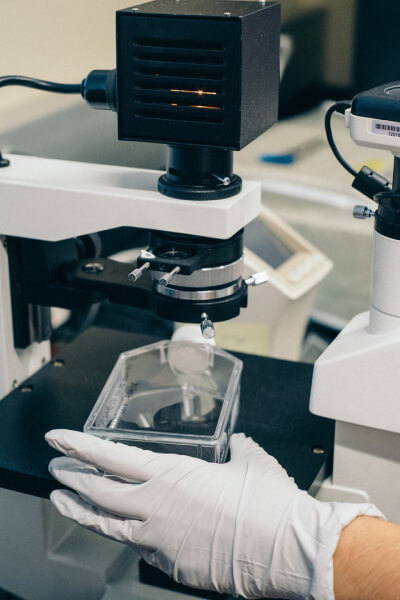JV Biolabs utilizes human cell, tissue and organ culture models, human-mouse xenograft models and animal models to provide efficacy and safety data on compounds in pre-clinical and early clinical stages of development.
How Can We Help your Program? Utilize our technology for:
- Early assessment of responses in human tissue (ex vivo)
- Screening for therapeutic efficacy in human tissue
- Early identification of potential toxicity / inflammation
- Mechanistic studies related to efficacy and toxicity
We are a research company and can work with you to address drug development issues.
JV Biolabs expertise encompasses:
- Inflammatory and hyperplastic skin disease
- Skin aging, chronic wound formation and wound healing
- UV-induced skin damage
- Fibrosis
- Tumor Biology/tumor immunology
- Chronic kidney, liver and metabolic disease
- Cell, tissue and organ culture technology

INFLAMMATORY AND HYPERPLASTIC SKIN DISEASE
JV Biolabs has sophisticated human skin organ culture models, human skin-scid mouse transplant/ xenograft models and additional animal models to address inflammatory and hyperplastic skin disease patho-physiology and treatment.
Our services can help you obtain early understanding of:
- Drug efficacy
- Drug-induced toxicity
- Inflammatory changes and allergenicity
- Mechanisms of action (for efficacy and toxicity)
Models are of use in studies related to:
- Psoriasis
- Acne, rosacea and atopic dermatitis
- Auto-immune skin diseases
- Drug-induced skin eruptions and generalized inflammation
- Contact irritation / contact sensitivity
- UV skin damage: Prevention and repair
Services of value in pre-clinical and clinical drug development:
FIBROSIS: NORMAL AND ABNORMAL WOUND HEALING
Human skin organ culture in conjunction with animal models and cell culture models provides a unique perspective for understanding normal and abnormal wound healing as well as for understanding the fibrotic response in the skin.
Services of value in pre-clinical and clinical drug development:
- Organ-cultured human skin and animal models for wound healing in normal skin, aged skin, diabetic, steroid atrophy; normal versus abnormal wound healing.
- Use of organ-cultured human skin to distinguish fibro-proliferative from fibrotic processes; assess collagen production and breakdown in human skin.
- Cell culture models with primary human dermal fibroblasts and human epidermal keratinocytes.
- Mechanisms of action for drugs that modulate collagen production and breakdown.
- Bleomycin and gadolinium models to assess collagen deposition and breakdown in animals.
- Drug-induced toxicity assessed in parallel (organ culture, cell culture and animal models).
